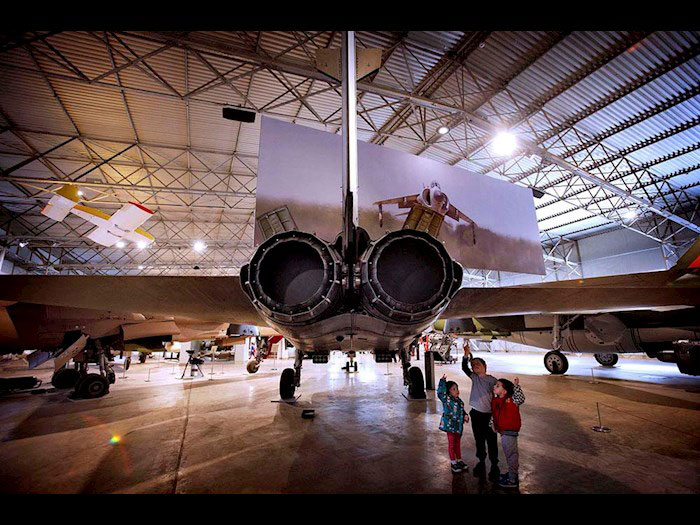
The Museum of Flight, based at Fortune Airfield, near Edinburgh, is known as the best aviation site in the world. It houses a massive collection of war planes and other essential flying paraphernalia. The Museum started out as an RAF airship and fighter base in World War I. We provide a brief account of the museum’s history and what guest can expect to see during their visit.
The Museum of Flight, situated at Fortune Airfield, near Edinburgh, houses the biggest airframe collection in the world. It has a variety of planes and plenty of essential flying paraphernalia like radar equipment and parachutes. The museum participates in festivals, holds robotic technology demonstrations and hosts many air shows in addition to having visitors. The Museum of Flight began its life as an airship and fighter base during World War I. This article gives you a brief history of the museum and highlights what visitors can see there.
Brief History
The museum’s history dates back to 1916 – during this period it was utilised as a base for any aircraft that defended Edinburgh from being attacked by Zeppelins. In 1919, the British airship, R34, departed from this base and made its first record breaking return flight over the Atlantic.
RAF East Fortune assisted all throughout WWII, and became a training establishment for flying, originally for evening fight operations. It then changed to a daylight operation centre from 1942, and finally became an air base for the de Havilland Mosquito aircraft.
After WWII ended, the base was no longer utilised by the Royal Armed Forces, and the Scottish Museum of Flight opened at the site in 1976.
Displays
The refurbished hangars at the museum tell plenty of stories about the military and civil aviation throughout the past 100 years and has top-notch aircrafts on display, along with documents, uniforms and photographs presented in a stimulating and interactive way.
All the historical WWII buildings on site have lots of small exhibitions; therefore, you get value for money when you visit.
Hangars
The hangars were initially built in 1940 to 1941 and weren’t meant to last 70 years. They are now an integral part of East Fortune, and offer a significant link between Scotland’s war histories coupled with fascinating aviation stories.
In 2014, a £3.6 million pound project began to restore the hangars with a view to improving the inside environment, allowing staff to take better care of the displays, collections and to add other items like documents, uniforms and photographs. Furthermore, auditory visuals and interactive exhibitions were added to enhance all the existing stories.
Hangar 1
This area hosts some exclusive military airframes like the Super marine Spitfire Lexie with unique bubble shelter, the McDonnell Douglas F4S Phantom and the Messerschmitt Me163B Komet rocket fuelled fighter. Hangar 1 has neutral lighting, allowing you to get good photographs using flash if necessary.
Hangar 2
Hangar 2 has some appealing civil displays, although the lighting gives it a distinctive colour casting which means you have to make corrections afterwards. Photographers also have the option to get close and use flash for most of the airframes.
Hangar 3
Hangar 3 contains a few renovation projects at present.
Hangar 4
This has been purpose built to accommodate Concorde, the only example left of this killer flying machine. Smaller exhibition displays dotted all around the building record down any developments of supersonic flights, however, the building itself is the main home for some superb aeronautical engineering that guests can hop on board. This particular hangar has a lot of light, but photographers will have to use tripods because flash isn’t enough to illuminate the building.
The Radar Room
The Radar Room offers meaningful insights about certain elements of complex aviation. Amongst the displays are the insides of incredibly complicated and advanced Airpass radar systems that are used by jet fighter planes. Plus, there is a demonstration of an earlier radar in use; here there is a cathode ray tube that changes whilst you walk past. Overall, this room has a lot of information and object panels, as well as a huge interactive airfield base map that highlights its progress. Here, you will find some captivating auditory visuals about the life of all those who served at Royal Armed Forces, East Fortune.
The Parachute Store
The store was initially used for its job – storing parachutes. It currently has visuals that explain how the parachutes were maintained and packaged to protect the safety of all the air crew.
Outdoor Airframes
Outside, you will find the Comet, Vulcan, and BAC 111; they are too big to display indoors.
Museum Shop
There is a shop at the main entrance selling models, souvenirs, books and refreshments.
Plan Your Visit Now to the National Museum of Flight in Edinburgh.
